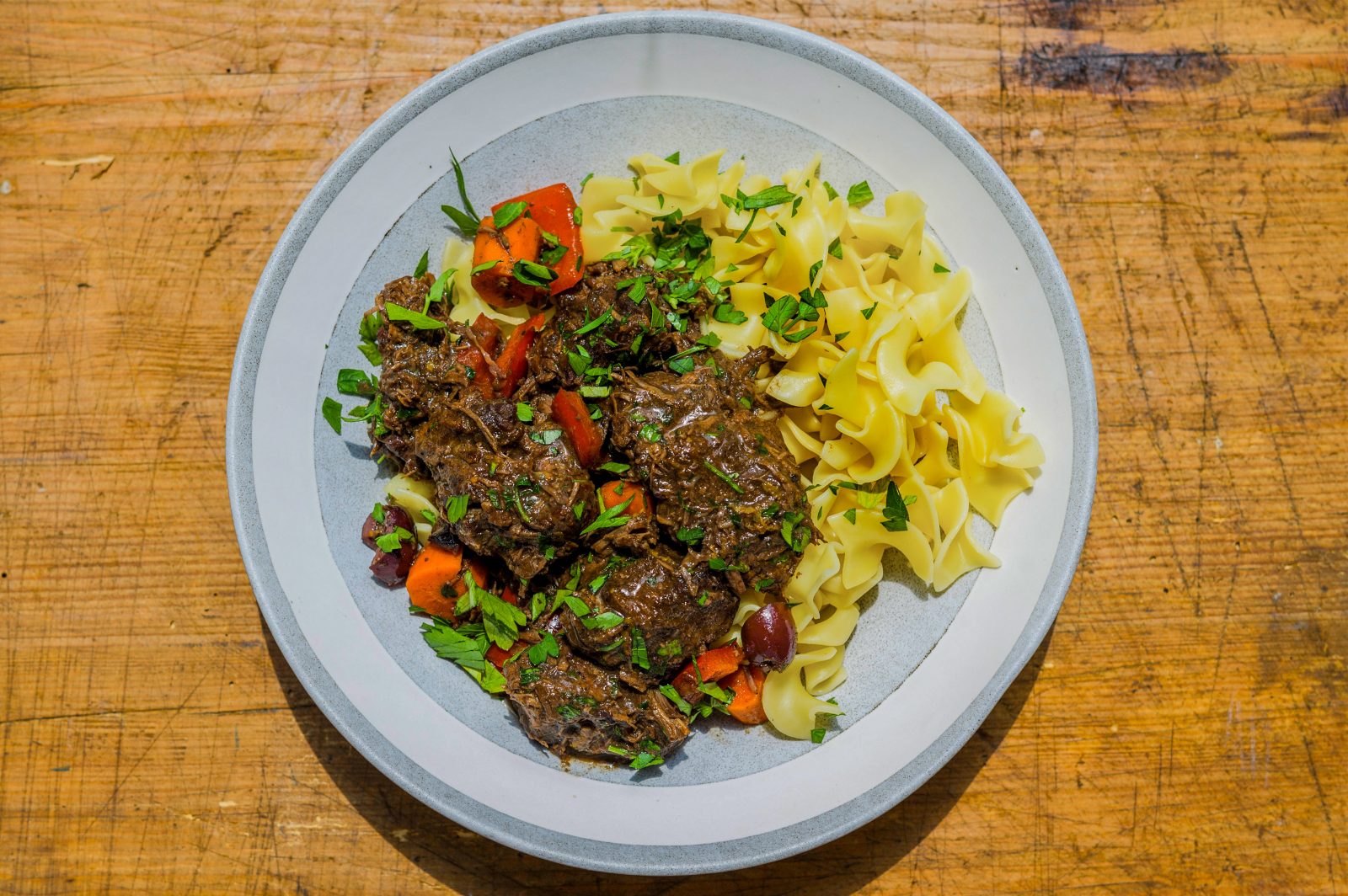Your email address is required to begin the subscription process. We will use it for customer service and other communications from Milk Street. You can unsubscribe from receiving our emails at any time.
Hi Myrna,
Braising meats with minimal liquid in a covered pot allows the meat to cook gently in its own juices. The method concentrates juices that can later make richly flavored sauces. You'll find more tips and trick like this in our latest cookbook "Milk Street: The New Rules."
Best,
The Milk Street Team
there are no liquids added and that's fine but then you get to a step where magically 2.5 cups of liquid somehow exist.
In a pressure cooker that may be so, but in a dutch oven, in a steam oven on "moist" there was almost no liquid at all.
"If needed, add with water" reads like english as a second language, but I think it means that if you don't have 2.5 cups, make it up with water.
It stressed me out because it made me worry i'd done something wrong earlier on. But I guess it is simply assuming more liquid.
All that said, I cooked this yesterday and the flavors were layered, complex, and intriguing. Though it came out a bit salty for my taste and I'd cut the salt in half next time.
Kayla - The liquid at the end of step 3 might seem magical, but it's coming from three reliable sources: carrots, onion, and the meat itself. The heat, and the salt present in the pot, help to pull moisture out of these ingredients, and the heavy lid traps steam and recirculates it into the pan to produce the 2.5 cups. The quantity of liquid that you observe will vary depending on the size and freshness of your carrots and onion and the tightness of the seal between the lid and the pot, which is why we recommend adding water as needed (that odd language has been corrected, by the way). This dry braise method produces a final dish with intensely concentrated flavor - I'm glad to hear that's what you experienced when you made it! - April D.
Kayla - The liquid at the end of step 3 might seem magical, but it's coming from three reliable sources: carrots, onion, and the meat itself. The heat, and the salt present in the pot, help to pull moisture out of these ingredients, and the heavy lid traps steam and recirculates it into the pan to produce the 2.5 cups. The quantity of liquid that you observe will vary depending on the size and freshness of your carrots and onion and the tightness of the seal between the lid and the pot, which is why we recommend adding water as needed (that odd language has been corrected, by the way). This dry braise method produces a final dish with intensely concentrated flavor - I'm glad to hear that's what you experienced when you made it! - April D.
there are no liquids added and that's fine but then you get to a step where magically 2.5 cups of liquid somehow exist.
In a pressure cooker that may be so, but in a dutch oven, in a steam oven on "moist" there was almost no liquid at all.
"If needed, add with water" reads like english as a second language, but I think it means that if you don't have 2.5 cups, make it up with water.
It stressed me out because it made me worry i'd done something wrong earlier on. But I guess it is simply assuming more liquid.
All that said, I cooked this yesterday and the flavors were layered, complex, and intriguing. Though it came out a bit salty for my taste and I'd cut the salt in half next time.
Kayla - The liquid at the end of step 3 might seem magical, but it's coming from three reliable sources: carrots, onion, and the meat itself. The heat, and the salt present in the pot, help to pull moisture out of these ingredients, and the heavy lid traps steam and recirculates it into the pan to produce the 2.5 cups. The quantity of liquid that you observe will vary depending on the size and freshness of your carrots and onion and the tightness of the seal between the lid and the pot, which is why we recommend adding water as needed (that odd language has been corrected, by the way). This dry braise method produces a final dish with intensely concentrated flavor - I'm glad to hear that's what you experienced when you made it! - April D.
Kayla - The liquid at the end of step 3 might seem magical, but it's coming from three reliable sources: carrots, onion, and the meat itself. The heat, and the salt present in the pot, help to pull moisture out of these ingredients, and the heavy lid traps steam and recirculates it into the pan to produce the 2.5 cups. The quantity of liquid that you observe will vary depending on the size and freshness of your carrots and onion and the tightness of the seal between the lid and the pot, which is why we recommend adding water as needed (that odd language has been corrected, by the way). This dry braise method produces a final dish with intensely concentrated flavor - I'm glad to hear that's what you experienced when you made it! - April D.



There seems to be no liquid added to the first Hal’s of the cooking?